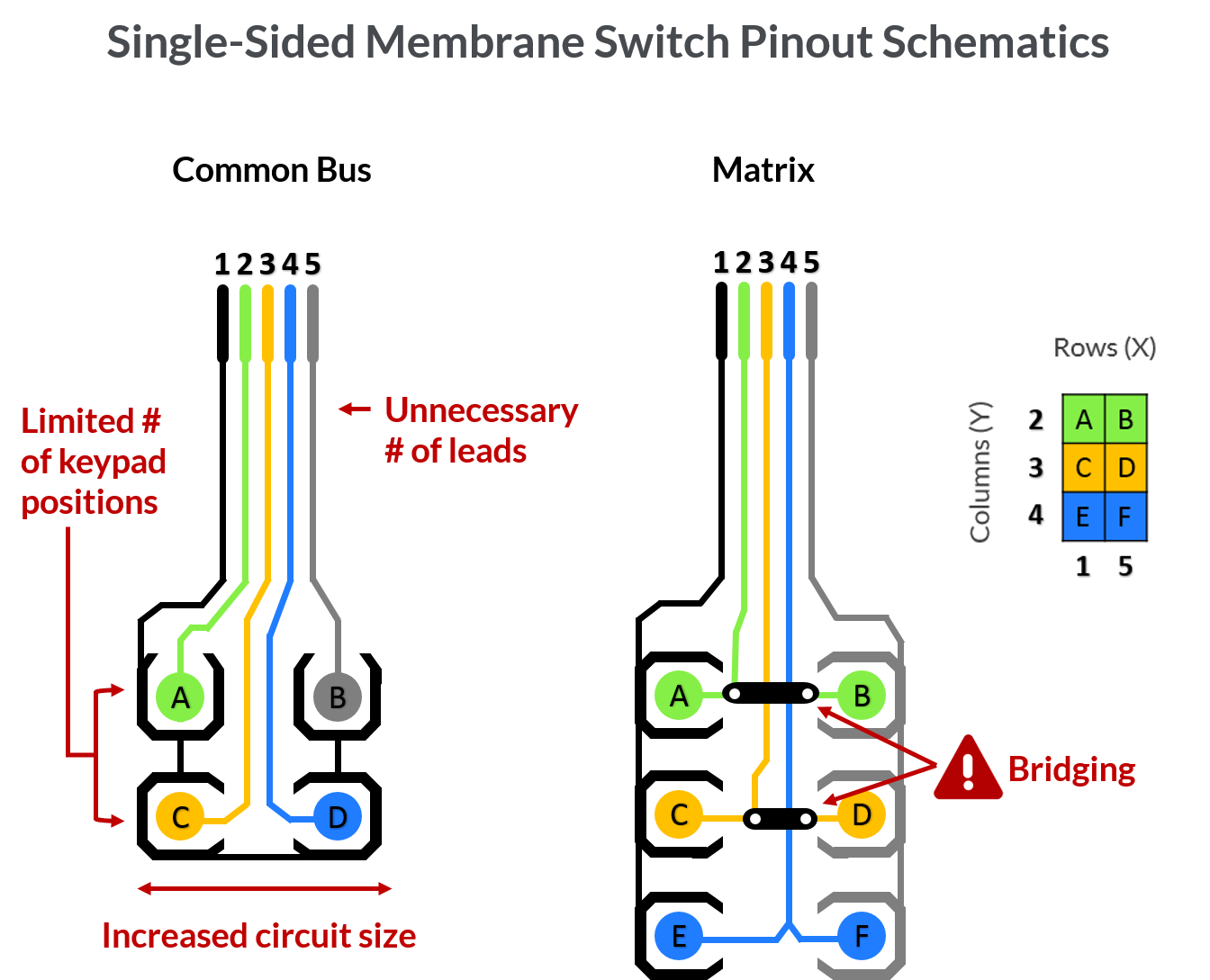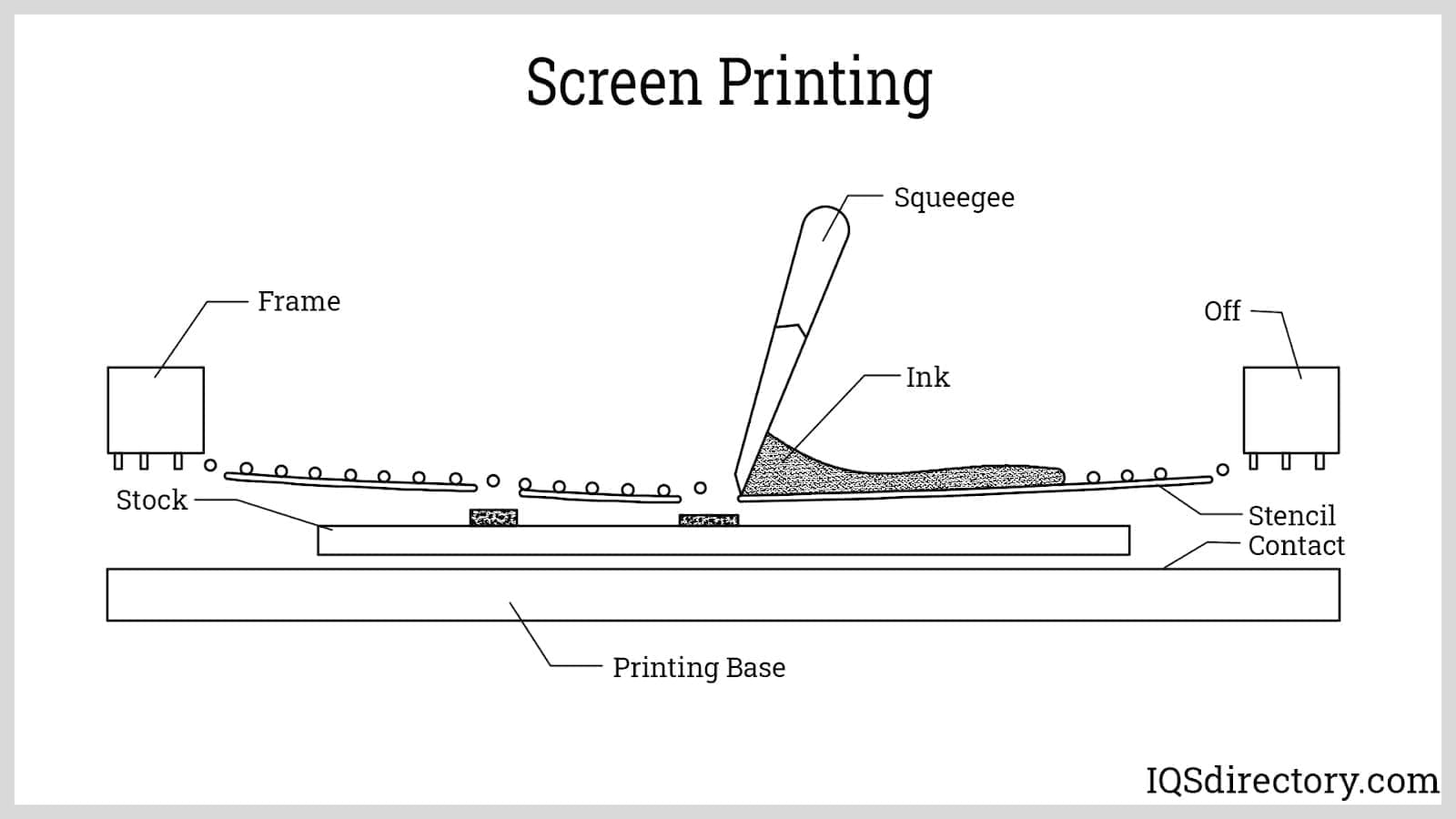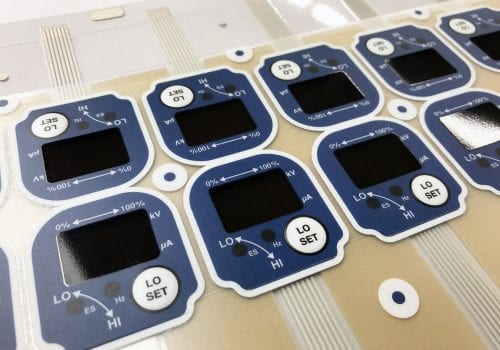The Manufacturing Process Behind Membrane Layer Change: What You Need to Know
The manufacturing procedure behind membrane switches over combines careful layout, material choice, and quality assurance. It begins with comprehending the complexities of membrane layer switch layout and proceeds with different phases, consisting of product choices and printing strategies. Each stage plays a necessary function in making sure functionality and durability. The intricacies of layer building and construction and the rigorous testing requirements might expose insights that are not promptly noticeable. What lies beyond these foundational components?
Comprehending Membrane Layer Switch Over Style
Although membrane layer switches may show up easy in the beginning look, their style entails elaborate factors to consider that guarantee capability and durability. The layout process begins with an extensive understanding of customer requirements, including the user interface's intended application and ecological variables. Functional designs is an essential aspect, as the layout has to promote simplicity of usage while ensuring that tactile comments meets user expectations.Moreover, the layering of parts, such as graphic overlays, adhesive layers, and conductive traces, must be specifically crafted. membrane switch. This layered setup not only influences the button's responsiveness but likewise affects its long life. Attention is offered to the securing techniques utilized to protect versus wetness and dirt, which can endanger efficiency. Furthermore, style considerations include aesthetics, where color pattern and aesthetic clearness improve user experience. Eventually, the style of membrane layer switches equilibriums performance, customer experience, and toughness, making sure that they fulfill the demands of different applications successfully
Materials Used in Membrane Switch Manufacturing
When choosing materials for membrane layer switch production, it is important to consider both efficiency and longevity. The primary products include polyester and polycarbonate movies, which give versatility and stamina. These movies are commonly coated with glue to assure proper bonding to substratums. Conductive inks, usually composed of silver or carbon, are critical for producing electric links within the button, enabling reliable operation.Additionally, a protective layer, such as a tough coat, is regularly related to improve scratch resistance and durability. The choice of backing product, such as acrylic or foam, can considerably influence the switch's tactile feeling and total customer experience. In addition, different environmental variables, including temperature level and moisture, must direct product option to ensure peak performance in particular applications. Ultimately, the right combination of products adds to the membrane layer button's performance and lifespan, making notified choices crucial for makers.
The Printing Process: Creating Video and Text
The printing process in membrane layer switch manufacturing plays a considerable duty in creating high-grade graphics and text. Numerous graphic layout methods are utilized to ensure aesthetic allure and functionality, while careful ink selection methods are important for toughness and performance. Recognizing these aspects is essential for achieving best outcomes in membrane layer button style.
Graphic Style Techniques
Graphic layout strategies play a crucial role in the printing procedure of membrane layer switches, as they define how graphics and text will inevitably appear on the end product. Reliable visuals style includes the critical use designs, fonts, and shades to enhance readability and aesthetic allure. Developers usually make use of vector graphics for scalability, making sure that photos continue to be sharp at different dimensions. Furthermore, interest to comparison and alignment is vital, as it affects user communication and visual top quality. The consolidation of branding elements, such as logos, should be handled with care to preserve brand honesty. Overall, thoughtful graphic layout methods add significantly to the performance and attractiveness of membrane layer buttons, affecting customer experience and item efficiency.
Ink Choice Techniques
Selecting the ideal ink is essential for achieving the wanted aesthetic top quality and toughness in membrane switch production. Different ink kinds are used, consisting of solvent-based, water-based, and UV-curable inks. Each kind provides distinct attributes, such as flexibility, resistance, and bond to ecological variables. Solvent-based inks are typically preferred for their toughness and dynamic shades, while water-based inks are extra eco-friendly however might have restrictions in adhesion. UV-curable inks supply fast curing and durable performance. In addition, color matching strategies ensure that the selected inks straighten with layout requirements. Ultimately, the selection of ink should take into consideration variables such as application method, substrate compatibility, and end-use requirements to attain superior cause membrane switch graphics and message.
Layer Construction and Setting Up

Material Selection Refine
A cautious option of materials is important in the production procedure of membrane buttons, as it directly affects performance and longevity. The main materials used consist of polyester, polycarbonate, and numerous conductive inks. Polyester is usually favored for its excellent resistance to chemicals and abrasion, making it suitable for severe atmospheres. Polycarbonate, on the various other hand, gives exceptional clarity and influence resistance, which is useful for applications requiring visibility and robustness. Conductive inks, typically composed of silver or carbon, are vital for creating trusted electric pathways. Furthermore, the choice of glue products image source impacts the overall stability of the button - membrane switch. Reviewing elements such as environmental direct exposure, responsive comments, and visual requirements overviews makers in choosing the most effective materials for their particular applications
Layer Adhesion Strategies
Adhering layers in membrane layer button building is a crucial procedure that ensures performance and long life. Numerous adhesion strategies are used to secure suitable bonding in between layers, which typically consist of making use of adhesives, heat, and stress. Pressure-sensitive adhesives (PSAs) are generally used for their simplicity of application and prompt bonding capacities. Additionally, thermal bonding strategies can be used, where heat is made use of to trigger adhesive residential or commercial properties, safeguarding a strong bond. The choice of bond approach mostly depends on the products included and the specific application demands of the membrane button. Proper alignment and uniform application of adhesives are necessary to protect against problems, protecting the button runs effectively throughout its desired life-span.
Top Quality Control Procedures
Assuring top quality control during the layer construction and assembly of membrane switches is vital for maintaining performance and integrity. This procedure usually entails numerous crucial steps, including thorough examinations at each phase of production. Suppliers utilize advanced testing approaches, such as peel examinations and attachment analyses, to validate the integrity of layer bonds. Additionally, visual assessments are conducted to identify any kind of flaws in printing or material variances. Ecological conditions, such as temperature level and humidity, are meticulously checked to assure excellent treating and attachment. Furthermore, normal calibration of devices aids preserve accurate production criteria. By carrying out these quality assurance measures, manufacturers can significantly minimize the risk of product failing, assuring that the last membrane layer switches satisfy the needed requirements and consumer assumptions.
Checking and Quality Assurance Procedures

Developments in Membrane Layer Switch Over Technology
As advancements in technology remain to progress, membrane layer switches are benefiting from innovative growths that boost their functionality and customer experience. One remarkable development is the integration of capacitive touch technology, which permits more instinctive and receptive interface. This shift not just improves appearances yet official statement likewise minimizes mechanical deterioration, expanding the life expectancy of the switches.Additionally, improvements in visuals overlay products have brought about improved longevity and resistance to ecological aspects such as wetness and UV light. These products now use boosted quality and illumination, further raising the visual appeal.Furthermore, the incorporation of smart technology is transforming membrane layer switches over into interactive control board, making it possible for connectivity with IoT devices. This connectivity promotes a seamless user experience, paving the way for applications in various markets, from healthcare to consumer electronic devices. Jointly, these technologies placement membrane layer switches over as crucial parts in modern-day gadget layout.
Often Asked Concerns
Just how Lengthy Does the Membrane Change Manufacturing Refine Take?
The duration of the membrane switch production procedure can differ substantially. Variables such as complexity, materials used, and production quantity influence timelines, with regular production varying from a couple of days to numerous weeks for completion.
What Are the Usual Applications for Membrane Layer Switches?
Membrane switches are typically utilized in various industries, including automobile controls, home devices, clinical tools, and customer electronics (membrane switch). Their versatility and sturdiness make them ideal for applications requiring user-friendly user interfaces and trustworthy performance in diverse atmospheres
Can Membrane Changes Be Custom-made for Specific Needs?

What Is the Lifespan of a Normal Membrane Switch Over?
The life expectancy of a common membrane switch differs, yet typically, it ranges from 1 to 5 million cycles. Factors such as usage, environment, and material top quality substantially affect sturdiness and overall efficiency over time.

Are Membrane Switches Eco-friendly?
The environmental kindness of membrane layer switches differs. Some materials made use of may not be recyclable, while others can be environment-friendly. The total impact relies on producing practices and products, demanding cautious consideration during choice and disposal. The manufacturing procedure behind membrane layer switches combines careful design, product selection, and high quality control. It begins with comprehending the ins and outs of membrane layer switch layout and proceeds through numerous stages, including product choices and printing methods. When selecting materials for membrane layer button production, it is crucial to ponder both performance and durability. A mindful selection of materials is essential in the production process of membrane buttons, as it straight influences functionality and durability. The option of adhesion approach greatly depends on the materials involved and the certain application needs of the membrane switch.